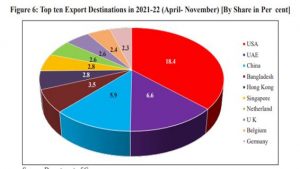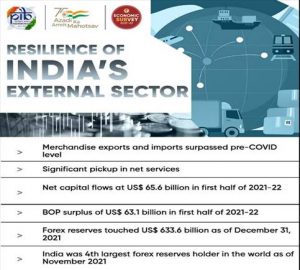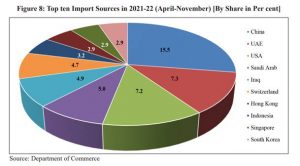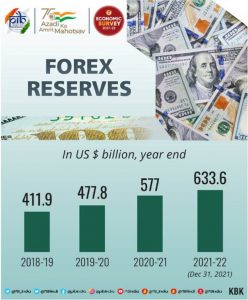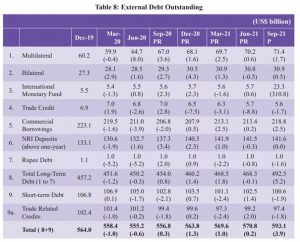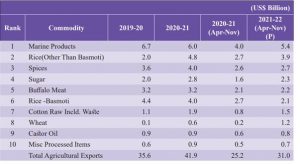DAILY CURRENT AFFAIRS (MARCH 23, 2022)
THE POLITY AND GOVERNANCE
1. BIHAR TO BECOME THE FIRST STATE TO IMPLEMENT DYNAMIC MAP TO TRACK LAND OWNERSHIPS
THE CONTEXT: New technological interventions are leading to better management and ease of living. Aligning with this, Bihar has become the first state in the country to introduce the concept of the dynamic map for villages. The dynamic map will automatically get updated, each time land ownership changes hands. The objective of the move is to reduce legal disputes.
THE EXPLANATION:
About the Initiative
As stated by the Bihar government, since February 2021, the state has seen almost 37,000 cases of land disputes and others. The move aimed to implement dynamic maps is taken as the state government’s initiative to resolve the issue of long-pending land reforms. It is pertinent to mention that the state Assembly has recently passed the Bihar Land Mutation Amendment Bill, 2021, that made the mutation of maps mandatory.
How will it work?
Every time a mutation takes place now, it will entail three changes, including
- A change in the text
- A change in the land parcel
- A modification of the survey map
What is Bihar Land Mutation Amendment Bill 2021?
- The Bill is aimed at reducing land-related disputes in the state. According to the Bihar government, in just about a year since February 2021, the state has seen almost 37,000 cases of some land dispute or the other. The move towards dynamic maps is part of a series of steps taken by the state government to implement long-pending land reforms.
- Therefore, dynamic maps of the village would ultimately reduce the cases related to land disputes considerably.
THE ENVIRONMENT AND ECOLOGY
2. RISE IN HUMAN-WILDLIFE CONFLICT IN KERALA
THE CONTEXT: The Wildlife Institute of India-Dehradun and Periyar Tiger Conservation Foundation in Kerala had jointly conducted a study to identify the reasons behind the increasing incidents of man-animal conflict in the state.
THE EXPLANATION:
- According to Kerala Forest Department data, the state has, since 2011, reported 34,875 cases of wildlife attacks, leaving 1,233 dead and 6,803 injured. A large number of deaths have been caused by snake bites. The incidents of attacks have been reported from across the state with a slight increase in central and northern forest circles.
- Wildlife attacks on humans have assumed alarming proportions in Kerala, where as many as 1,233 people have been killed in such attacks in the last one decade. One of the major factors behind the menace is the depletion in the quality of forest habitats in the state due to the growth of invasive alien plants.
| What is Invasive Alien species?
Invasive alien species are plants, animals, pathogens and other organisms that are non-native to an ecosystem, and which may cause economic or environmental harm or adversely affect human health. In particular, they impact adversely upon biodiversity, including decline or elimination of native species – through competition, predation, or transmission of pathogens – and the disruption of local ecosystems and ecosystem functions. |
- The Forest Department sources said the study has specifically pointed out that foreign invasive plants at forests have reduced the availability of fodder in forests, forcing animals to foray into settlements and farmlands.
- The quality of forest habitats has been lost due to the cultivation of alien plants mainly acacia, mangium and eucalyptus in forest tracts for commercial purpose. In Kerala, these alien trees have been cultivated at 30,000 hectares of forest land, impacting the quality of animal habitats.
- Other factors identified behind the increase in wildlife attacks are changing patterns of crops cultivated in farmlands near forests. Sugarcane, banana and similar crops are largely cultivated in such areas. Besides, the area of cultivation near forest tracts has increased leading to the conflict.
- The study also noted an increase in wildlife population due to effective conservation strategies. The movement of wildlife has been disrupted due to the fragmentation of habitats coupled with the increased movement of humans through such fragmented areas during odd hours.
- Recently, Kerala government had submitted a proposal to the Ministry of Environment, Forest and Climate Change to declare wild boar as vermin, which would make the culling of the animal legal. However, the Union Ministry turned down the proposal.
| Value Addition:
Declaring animals as vermin: · Vermin means wild animals which are believed to be harmful. If a species is declared vermin, that particular species can be hunted or culled without restriction. · Any species can be declared vermin except: o Species which are listed in Schedule I of Wildlife Protection Act 1972 o Species which are listed in Part II of Schedule II of WPA 1972 · Section 62 of the Wildlife Protection Act, 1972 empowers the states to send a list of wild animals to the Centre requesting it to declare them vermin for selective slaughter. · For the period the notification is in force such wild animal shall be included in Schedule V of the law, depriving them of any protection under that law. · Wild boars, nilgai and rhesus monkeys are Schedule II and III members — also protected but can be hunted under specific conditions. Crows and fruit bat fall in Schedule 5, the vermin category. |
3. MOST OF GANGA CLEAN, CLAIMS JAL SHAKTI MINISTRY
THE CONTEXT: According to the Ministry of Jal Shakthi, the water quality of the river Ganga was clean enough for bathing and capable for supporting the river ecosystem for almost the entire stretch of the river.
THE EXPLANATION:
- According to the Ministry, the Dissolved Oxygen (DO), which is an indicator of river health was within “acceptable limits” of “bathing water quality criteria”.
- A report by the Central Pollution Control Board in 2018, pointed out four polluted stretches on the main stem of river Ganga. There are five categories ranked 1 to 5, with 1 the most polluted and 5 the least. An updated 2021 report noted that none of the stretches of the Ganga stretches were now in Priority Category I to IV and only two stretches are in Priority Category V with Biological Oxygen Demand (BOD), a parameter different from DO, ranging between 3-6 microgram/litre as per CPCB categorisation of polluted stretch.
- A comparison of median data of water quality parameters such as DO, Bio-chemical Oxygen Demand (BOD) and Faecal Coliform (FC) from 2014 and 2021; DO (Median) has improved at 31 locations; BOD at 46 and FC at 23 locations, respectively, the Ministry data noted.
- The 2018 report of the CPCB had identified 351 polluted stretches on 323 rivers based on monitoring results of 521 rivers in terms of Bio-chemical Oxygen Demand (BOD). “Based on the assessment of water quality, various measures are being taken both by the Centre and the States to prevent pollution of rivers and drains out–falling into them. River cleaning is a continuous process and the Central government assists the State governments and urban local bodies through schemes like ‘Namami Gange’ and National River Conservation Plan (NRCP).
Value Addition:
National Mission for Clean Ganga (NMCG)
- NMCG has been focusing on youth as part of its outreach and public communications efforts as they are the impellers of change.
- NMCG has tied-up with Diamond Toons to develop and distribute comics, e-comics and animated videos.
- The content will be designed with the objective of bringing about behavioral change amongst children towards Ganga and other rivers.
Namami Gange Programme
It is an Integrated Conservation Mission, approved as ‘Flagship Programme’ by the Union Government in June 2014 with budget outlay of 20,000 Crore to accomplish the twin objectives of effective abatement of pollution, conservation and rejuvenation of National River Ganga.
Main pillars of the Namami Gange Programme are:-
- Sewerage Treatment Infrastructure
- River-Front Development
- River-Surface Cleaning
- Bio-Diversity
- Afforestation
- Public Awareness
- Industrial Effluent Monitoring
- Ganga Gram
Its implementation has been divided into
- Entry-Level Activities (for immediate visible impact),
- Medium-Term Activities (to be implemented within 5 years of time frame) and
- Long-Term Activities (to be implemented within 10 years).
4. NEW DELHI REMAINS THE WORLD CAPITAL IN AIR POLLUTION, SWISS SURVEY FINDS
THE CONTEXT: New Delhi has topped the list of most polluted capitals in 2021, a dubious first position it has now held for four successive years, according to the World Air Quality Report prepared by Swiss organization IQ Air.
HIGHLIGHTS OF THE REPORT:
- According to the report, “Central and South Asia had some of the world’s worst air quality and was home to 46 of the world’s 50 most polluted cities” in 2021.
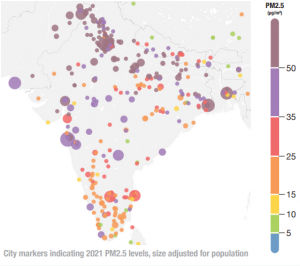
- “India was home to 11 of the 15 most polluted cities in Central and South Asia in 2021.Delhi saw a 14.6% increase in PM2.5 concentrations in 2021 with levels rising to 96.4 µg/m3 from 84 µg/m3 in 2020.
- Delhi is followed by the following capitals — Dhaka (Bangladesh), N’Djamena (Chad), Dushanbe (Tajikistan) and Muscat (Oman). The city is topping the list for the fourth consecutive year. Delhi topped a list of 92 capital cities in 2020, 85 such cities in 2019, and 62 such cities in 2018.
- Bhiwadi also topped the list of the ‘world’s most polluted cities’ in 2021 — 50 cities ranked in terms of PM 2.5 levels. This was followed by Ghaziabad and Hotan, China. Delhi was fourth on the list, while Noida was seventh with a PM 2.5 level of 91.4 µg/m3, and Gurgaon was eighteenth with 83.4 µg/m3. Faridabad, Baghpat, Bulandshahr, Meerut, and Sonipat are other NCR areas that were on the list.
- Sources of PM 2.5 “include internal combustion engines, power generation, industrial processes, agricultural processes, construction, and residential wood and coal burning. The most common natural sources for PM 2.5 are dust storms, sandstorms, and wildfires,” the report stated.
- In 2021, none of the cities in India met the prescribed World Health Organization air quality standards of 5 micrograms per cubic meter, the report stated.
- India also continues to feature prominently among the most polluted cities with 35 of the top 50 most polluted cities being in this country. India’s annual average PM 2.5 levels reached 58.1 μg/m3 in 2021, ending a three-year trend of improving air quality.”
WHO’S NEW AIR QUALITY GUIDELINES

Governments Measures taken:
- Notification of National Ambient Air Quality Standards and sector-specific emission and effluent standards for industries.
- Setting up of monitoring network for assessment of ambient air quality.
- Introduction of cleaner gaseous fuels like CNG, LPG etc and ethanol blending.
- Launching of National Air Quality Index (AQI);
- Leapfrogging from BS-IV to BS-VI standards for vehicles by 1st April 2020.
- Regulating the bursting of pollution-emitting crackers.
- Notification of graded response action plan for Delhi identifying source wise actions for various levels of air pollution, etc.
- National Clean Air Programme.
THE ECONOMIC DEVELOPMENT
5. GOVERNMENT INCREASES MINIMUM SUPPORT PRICE FOR JUTE
THE CONTEXT: The Cabinet Committee on Economic Affairs, chaired by Prime Minister approved a proposal to raise the minimum support price (MSP) for raw jute to ₹4,750 a quintal for the 2022-23 season, an increase of ₹250, or 5.5%, over the previous year.
THE EXPLANATION:
- According to the Government, the new MSP would ensure a return of 60.53% over the all-India weighted average cost of production.
- The hike is in line with the principle of fixing the MSP at a minimum of 1.5 times the all-India weighted average cost of production, as announced in the budget for 2018-19. This assures a minimum 50% profit margin.
- The Commission for Agricultural Costs and Prices had recommended the higher MSP.
- The Jute Corporation of India (JCI) will continue as the central government nodal agency to undertake the price support operation. In case of any losses in the operation, they would be fully reimbursed by the central government.
Value Addition:
About MSP:
- MSP is the rate at which the government purchases crops from farmers and is based on a calculation of at least one-and-a-half times the cost of production incurred by the farmers.
- The government of India sets the MSP twice a year for 23 crops (13 Kharif, 6 Rabi and 4 commercial crops).
- The Commission for Agricultural Costs and Prices (CACP)attached the Ministry of Agriculture office, which decides the minimum support price and recommends it to the government. It is an advisory body whose recommendations are not binding to the government.
FRP for Sugarcane:
- The central government and State Government determine them.
- The Central Government announces Fair and Remunerative Prices, which are determined on the recommendation of the Commission for Agricultural Costs and Prices (CACP) and are announced by the Cabinet Committee on Economic Affairs, which Prime Minister chairs.
- The State Advised Prices (SAP) are announced by key sugarcane producing states generally higher than FRP.
Additional information about crops:

6. EXPLAINED: NATIONAL LAND MONETIZATION CORPORATION
THE CONTEXT: The Union Cabinet, chaired by Prime Minister has approved the setting up National Land Monetization Corporation (NLMC),it will be wholly owned Government of India company with an initial authorized share capital of Rs 5000 crore and paid-up share capital of Rs 150 crore.
THE EXPLANATION:
- NLMC will undertake monetization of surplus land and building assets of Central Public Sector Enterprises (CPSEs) and other Government agencies. The proposal is in pursuance of the Budget Announcement for 2021-22.
WHAT IS THE SIGNIFICANCE?
- At present, CPSEs hold considerable surplus, unused and under used non-core assets in the nature of land and buildings. For CPSEs undergoing strategic disinvestment or closure, monetization of these surplus land and non-core assets is important to unlock their value.
- NLMC will support and undertake monetization of these assets. This will also enable productive utilization of these under-utilized assets to trigger private sector investments, new economic activities, boost local economy and generate financial resources for economic and social infrastructure.
- NLMC is also expected to own, hold, manage and monetize surplus land and building assets of CPSEs under closure and the surplus non-core land assets of Government owned CPSEs under strategic disinvestment.
- Efficiency:NLMC will undertake surplus land asset monetization as an agency function. It is expected that NLMC will act as a repository of best practices in land monetization, assist and provide technical advice to Government in implementation of asset monetization programme.
- Technical Experts: NLMC will have necessary technical expertise to professionally manage and monetize land assets on behalf of CPSEs and other Government agencies. The Board of Directors of NLMC will comprise senior Central Government officers and eminent experts to enable professional operations and management of the company. The Chairman, non-Government Directors of the NLMC will be appointed through a merit-based selection process.
NLMC will be a lean organization with minimal full time staff, hired directly from the market on contract basis. Flexibility will be provided to the Board of NLMC to hire, pay and retain experienced professionals from the private sector.
- Nodal Agency: Department of Public Enterprise, Ministry of Finance, will set up the company and act as its administrative ministry.
What does monetisation mean?
- When the government monetises its assets, it essentially means that it is transferring the revenue rights of the asset (could be idle land, infrastructure, PSU) to a private player for a specified period of time.
- In such a transaction, the government gets in return an upfront payment from the private entity, regular share of the revenue generated from the asset, a promise of steady investment into the asset, and the title rights to the monetised asset.
- There are multiple ways to monetise government assets; in the case of land monetisation of certain spaces like offices, it can be done through a Real Estate Investment Trust (REIT) — a company that owns and operates a land asset and sometimes, funds income-producing real estate. Assets of the government can also be monetised through the Public Private Partnerships (PPP) model.
What is the Need?
- There are different reasons why the government monetises its assets. One of them is to create new sources of revenue.
- Second is to unlock the potential of unused or underused assets by involving institutional investors or private players.
- Thirdly, it is also done to generate resources or capital for future asset creation.

THE PRELIMS PRACTICE QUESTIONS
QUESTIONS OF THE DAY 23rd MARCH 2022
Q1. Consider the following statements about National Ayush Mission (NAM):
- It was launched during 11 th Five Year Plan
- It is centrally sponsored scheme.
- Government of India has recently announced its continuation of its implementation up to2026.
Which of the above given statements is/are correct?
a) 1 and 2 only
b) 2 and 3 only
c) 3 only
d) 1, 2 and 3
ANSWER FOR 22ND MARCH 2022
Answer: A
Explanation:
- Stagflation is a situation in an economy when inflation and unemployment both are at higher levels.
- Conventional thinking that a trade-off existed between inflation and unemployment (i.e., Phillips Curve) was falsified when a situation first arose in the 1970s in the US economy (average unemployment rate above 6 per cent and the average rate of inflation above 7 per cent) and in many Euro-American economies. This took place as a result of oil price increases of 1973 and 1979 and anticipation of higher inflation.
When the economy is passing through the cycle of stagnation and the government shuffle with the economic policy, a sudden and temporary price rise is seen in some of the goods—such inflation is also known as stagflation. Stagflation is basically a combination of high inflation and low growth.
